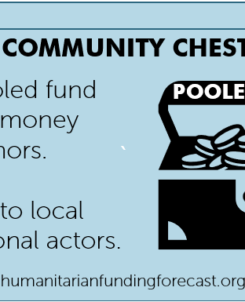Launch: Humanitarian Recession Index
Humanitarian Funding Forecast is launching its secondly yearly index: the Humanitarian Recession Index. The index, based on this story from 2021, provides a way to see whether humanitarian sectors are receiving less funding relative to need. The 2022 index shows that 10 out of 16 humanitarian sectors are in a recession – that is, they […]
So you want to be a Humanitarian CEO?
As reported in The New Humanitarian, there are calls for the next head of UNHCR to be a refugee with lived experience as a refugee. But how likely is that? And who is most likely to rise to the top of a humanitarian organisation? You’re in luck if you’re aged around 52 years old, from […]
Launch: Underfunded Crisis Index
Humanitarian Funding Forecast is launching its first yearly index: the Underfunded Crisis Index. The index, based on this story from 2021, aims to measure which recurring humanitarian crises are consistently underfunded. The 2022 index shows that 5 contexts are chronically underfunded (<40%). This includes three regional refugee response plans (DR Congo, Burundi, and South Sudan), […]
🚨 NEW: Updated Q2 July 2022 Forecasts
Latest analysis by Humanitarian Funding Forecasts shows that most humanitarian sectors in 2022 are forecast to grow more than what we thought at the start of the year. Of the 15 sectors analysed, 9 are forecast to grow more compared to our initial forecasts, 4 sectors have had their forecasts revised down, and another 2 […]
Response Plan Projects: A Red Herring for Localisation
The thing that sets the rhythm of humanitarian crises (or to be more precise: humanitarian coordination) are response plans. There are different types to do with refugee crises, non-refugee related crises and sudden onset crises – you can learn more about the different types here. But the one thing that they have in common is […]
Do more severe humanitarian crises get more money?
Humanitarian funding is an exercise in prioritisation by donors. Donors have a pot of money in their budgets that they need to distribute to different places, and they have to ask the question: where will this money make the most impact? Of course there are other considerations (e.g. national interests of governments), but for today […]
🚨 NEW: Updated Q1 April 2022 Forecasts
Welcome to the first update of our 2022 funding forecasts. This is our Q1 forecast (called Q1 as it follows the end of the first quarter, i.e. end of March). It takes into account our initial Q0 forecast which feeds in historic data, and the most recent data on how things are going in the […]
Who Funds Who? Donors by Context
Who funds where? It is one of the simplest and important questions when it comes to humanitarian aid. Yet, we’re not sure all that information has been collated before into one place that’s easy-to-read and accessible. If it is out there, maybe it’s “on display in the bottom of a locked filing cabinet stuck in […]
Crisis Profile: Ukraine
On 24th February 2022, a military offensive by Russia led to a rapid deterioration in the security situation in Ukraine, and vast humanitarian consequences. Five days later, on 1st March 2022, two bodies that coordinate humanitarian affairs, UN OCHA and UNHCR, announced inter-agency appeals for the humanitarian situation. The inter-agency appeal launched by OCHA covers […]
Are Pooled Funds a Driver of Localisation?
How can local and national actors access more funding? A quick (and always necessary) reminder: donors made commitments in the 2016 Grand Bargain to get at least 25% of funding to local and national actors. There’s a whole range of reasons why this is important. As the Localisation in Practice paper sets out, there are […]










